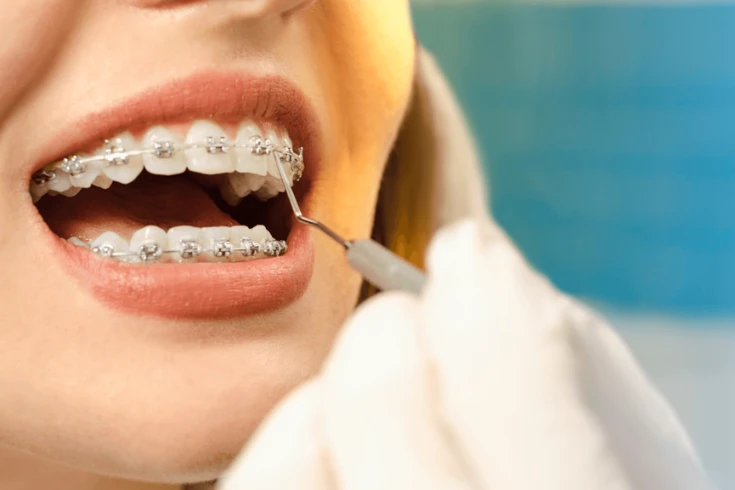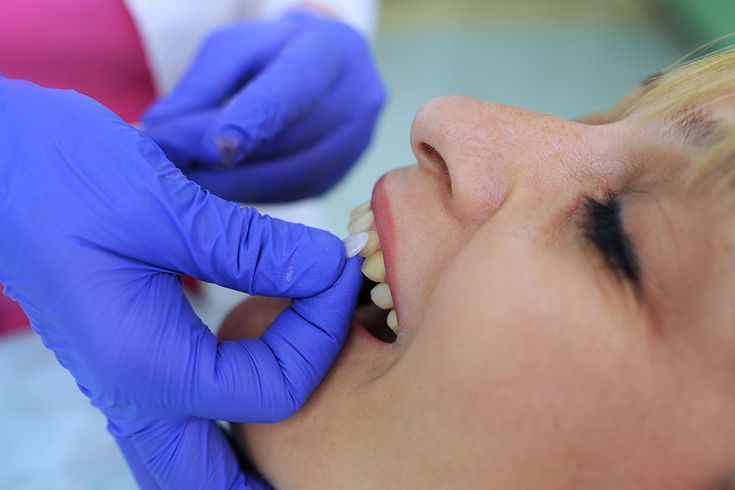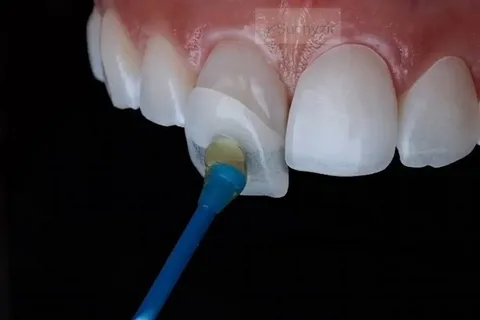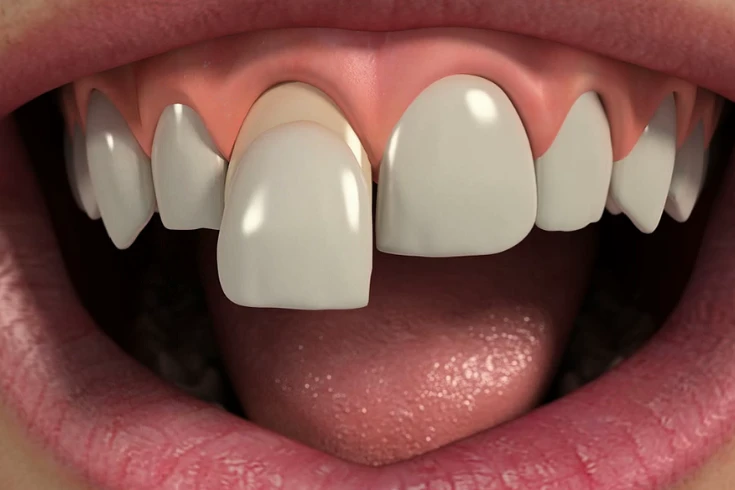Today, more adults than ever are turning to orthodontic treatments to improve their smiles, boost their confidence, and enhance their oral health. Dental braces for adults effectively correct misaligned teeth, offering various options to individual needs and lifestyles. Whether you’ve struggled with crooked teeth for years or teeth have shifted over time, adult braces provide a solution that can transform your smile at any age. This comprehensive guide explores everything you need to know about adult dental braces, including the types available, benefits, the process involved, cost considerations, and tips for choosing the right orthodontist, giving you a clear understanding of how braces can help you achieve the smile you’ve always wanted.
The Rise of Adult Orthodontics
According to the American Association of Orthodontists, one out of four orthodontic patients is an adult, which contributes to the growing popularity of adult braces.
- Improved Aesthetics: Many adults are motivated by the desire for a straighter, more attractive smile. A well-aligned smile can significantly boost self-esteem and enhance personal and professional interactions.
- Advanced Technology: Modern orthodontics offers a variety of treatment options that are less visible and more comfortable than traditional metal braces. Clear aligners, ceramic braces, and lingual braces provide discreet alternatives that fit seamlessly into adult lifestyles.
- Oral Health Benefits: Straight teeth are easier to clean and maintain, reducing the risk of cavities, gum disease, and other dental issues. For adults concerned about long-term oral health, braces offer a proactive solution.
- Correcting Previous Issues: Some adults may not have had access to orthodontic treatment as children, or they may have experienced shifting teeth due to aging, injury, or dental work. Adult braces can correct these issues and provide lasting benefits.
Types of Dental Braces for Adults
One of the most significant advancements in orthodontics is the variety of braces available to adults. You can choose the types of braces according to your needs, preferences, and budget.
1. Traditional Metal Braces
Traditional metal braces are the most common type of braces. It is made of metal brackets bonded to the teeth and connected by archwires. While metal braces are highly effective at correcting even the most severe misalignments, they are also the most noticeable option. However, today’s metal braces are smaller, lighter, and more comfortable than those used in the past.
Pros:
- Highly effective for all types of orthodontic issues
- Typically, the most affordable option
- Durable and resistant to breakage
Cons:
- The most visible type of braces
- May cause initial Discomfort or irritation
- Requires regular adjustments
2. Ceramic Braces
Ceramic braces are similar to metal braces and use tooth-colored or clear brackets that blend in with the teeth, making them less noticeable. These kinds of braces are popular among adults who want effective treatment without the conspicuous appearance of metal braces.
Pros:
- Less visible than metal braces
- Effective for a wide range of orthodontic issues
- Stain-resistant materials
Cons:
- More expensive than metal braces
- Brackets are larger and more prone to breakage
- May cause more friction and Discomfort
3. Lingual Braces
Lingual braces are placed on the backside of the teeth, making them invisible from the front. This option is ideal for adults who want utterly discreet treatment. Lingual braces are custom-made to fit the contours of each tooth, allowing for precise and effective treatment.
Pros:
- Completely hidden from view
- Custom-fit for each patient
- Effective for complex cases
Cons:
- More expensive than traditional braces
- Difficult to clean and maintain
- It may cause tongue irritation and speech issues initially
4. Clear Aligners
Clear aligners, such as Invisalign, have revolutionized orthodontic treatment for adults. These removable, transparent trays gradually shift teeth into place without brackets or wires. Clear aligners are popular for adults seeking a discreet and convenient treatment option.
Pros:
- Virtually invisible
- Removable for eating, drinking, and cleaning
- Comfortable and easy to wear
Cons:
- Not suitable for all cases
- Requires strict compliance for effective results
- They are more expensive than traditional braces
The Benefits of Dental Braces for Adults
Orthodontic treatment offers numerous benefits beyond achieving a straighter smile. Here are some of the critical advantages of getting dental braces as an adult:
Enhanced Aesthetics and Confidence
One of the benefits of dental braces is the improvement in appearance. A straight, well-aligned smile can significantly impact your self-confidence. Whether in social situations, work, or photos, you’ll feel more comfortable and confident showing off your smile.
Improved Oral Health
Misaligned teeth have gaps that are difficult to clean, leading to plaque buildup, cavities, and gum disease. Braces make maintaining good oral hygiene easier, reducing the risk of dental problems. A proper bite can also prevent wear and tear on the teeth, jaw pain, and other issues.
Correction of Bite Issues
Many adults seek orthodontic treatment to correct bite issues such as overbite, underbite, crossbite, or open bite. These issues can cause problems with chewing, speaking, and even breathing. Correcting bite alignment can improve oral function and prevent long-term complications.
Prevention of Future Dental Problems
Straight teeth are less likely to develop complications such as uneven wear, tooth fractures, and jaw pain. Addressing misalignment can prevent more severe dental issues later in life. Orthodontic treatment can also create space for future dental work, such as implants or bridges.
Better Overall Oral Health
Oral health is also included in overall health. If your oral health is not good, you might develop health problems such as heart disease and diabetes. Improving your oral health through orthodontic treatment can contribute to better overall well-being.
The Process of Getting Dental Braces as an Adult
If you’re considering dental braces as an adult, it’s essential to understand the process involved. Orthodontic treatment typically follows these steps:
Initial Consultation
The first step in getting dental braces is scheduling a consultation with an orthodontist. After accessing your teeth, the dentist will determine if the braces are the right solution. They will perform different tests and create a detailed treatment plan.
Treatment Planning
Based on the consultation, the orthodontist will suggest the best braces for your needs. They will explain the treatment plan, including the estimated duration, cost, and expected results.
Fitting the Braces
After the dentist decides the type of braces, they will fit them onto your teeth. Traditional braces involve bonding the brackets to the teeth and attaching the archwires. For clear aligners, you’ll receive a series of custom-made trays you’ll wear for a specific period before switching to the next set.
Regular Adjustments
You’ll need to visit the orthodontist regularly for adjustments throughout your treatment. These involve tightening the wires or replacing rubber bands for traditional braces. You’ll also receive a new set of trays every few weeks for clear aligners.
Managing Discomfort of teeth
It’s normal to experience some discomfort or soreness, especially after adjustments. Over-the-counter pain relievers, orthodontic wax, and soft foods can help alleviate any discomfort. Your orthodontist will provide tips for managing any issues that arise during treatment.
Monitoring Progress
The dentist will monitor your progress throughout the treatment and make any necessary adjustments to the plan. It’s essential to follow their instructions, including maintaining good oral hygiene, avoiding certain foods, and wearing rubber bands or other appliances as directed.
Completion of Treatment
Once your teeth have moved into their desired positions, the dentist will remove the braces, and you’ll see your new smile for the first time. Additionally, the dentist will suggest you wear a retainer to prevent your teeth from shifting back.
Post-Treatment Care
After removing the braces, the dentist will provide instructions on caring for your teeth and retainer. Regular checkups and good oral hygiene are essential to keeping your smile looking its best.
Challenges and Considerations for Adults
While dental braces offer numerous benefits, there are also some challenges and considerations to keep in mind:
Time Commitment
Orthodontic treatment requires a significant time commitment, often lasting between 12 and 36 months. You must attend regular appointments and follow your orthodontist’s instructions carefully during this time.
Cost of Treatment
The cost of treatment may vary depending on various factors, like the type of braces, the complexity of the case, and geographic location. On average, traditional metal braces range from $3,000 to $7,000, while clear aligners may cost between $4,000 and $8,000.
Dietary Restrictions
Specific braces, mainly traditional and ceramic, have dietary restrictions. You must avoid hard, sticky, or chewy foods that can damage the braces or get stuck in the brackets and wires.
Oral Hygiene Maintenance
Maintaining good oral hygiene is challenging during the treatment. Braces might trap food particles and make it more difficult to clean your teeth effectively. Adults with braces must diligently brush, floss, and use any recommended oral care products.
Potential for Relapse
Without proper post-treatment care, teeth can shift back to their original positions. Wearing a retainer is crucial to maintaining your results. Some adults may need to wear a retainer for the rest of their lives to prevent relapse.
Factors Affecting the Cost of Dental Braces for Adults
The cost of dental braces is a significant consideration for many adults. Several factors influence the overall cost of treatment, including:
- Type of Braces: Traditional metal braces are generally the least expensive option, while clear aligners and lingual braces are more costly.
- Complexity of the Case: In some cases, it requires longer treatment times and more complex appliances, increasing the cost.
- Geographic Location: The cost of orthodontic treatment differs depending on the location. Urban areas with a higher cost of living may have higher orthodontic fees.
- Orthodontist’s Experience: Highly experienced or specialized orthodontists may charge more.
- Insurance Coverage: Several dental insurance plans cover a portion of the cost of adult braces, while others do not. You should consult with your insurance provider to understand your coverage.
How to Choose the Right Orthodontist?
There are several ways to select the best orthodontist to achieve the best results with dental braces. Hence, here are some tips for choosing the orthodontist that suits your needs:
- Check Credentials: Ensure the orthodontist is board-certified and has the necessary training and experience to treat adults.
- Through Recommendations: You can ask friends, family, or your general dentist for recommendations. You can also check the testimonials on the website.
- Consider Experience: An experienced orthodontist who treats adults can effectively address the challenges and concerns unique to adult orthodontics.
- Evaluate Treatment Options: You should choose an orthodontist offering various treatment options, including traditional braces, clear aligners, and other alternatives.
- Visit the Office: Schedule a consultation to meet the orthodontist and staff, see the office, and discuss your treatment plan.
Also Read: Tips For Finding Cheap Dental Implants in California
How Much Do Adult Braces Cost?
There are various types of dental braces available. According to your needs and dentist’s advice you can have braces that are suitable for Adults. The cost of adult braces is shown in the following table.
| Types of Braces | Cost of the Braces |
| Invisalign | $3,000-$8,000 |
| Traditional Metal Braces | $3,000-$7,000 |
| Ceramic Braces | $4,000-$8,000 |
| Gold Braces | $4,000-$8,000 |
| Lingual Braces | $8,000-$10,000 |
Conclusion
Dental braces for adults provide a powerful way to enhance your smile, boost confidence, and improve oral health. Whether correcting misaligned teeth, addressing bite issues, or perfecting your smile, various treatment options can fit your lifestyle. While the process requires time and commitment, the long-term benefits are worth it. Orthodontic treatment goes beyond aesthetics—it invests in your overall well-being. With a skilled orthodontist’s guidance, you can achieve the smile you’ve always wanted, regardless of age. Take the first step toward lasting confidence and good health by scheduling a consultation today.
FAQ’s
Why are more adults choosing dental braces today?
They choose dental braces to improve their smiles, boost confidence, and enhance oral health. The rise in adult orthodontics is driven by improved aesthetics, advanced technology offering discreet options, and the ability to correct previous dental issues.
What are the benefits of braces for an adult?
The benefits of braces for adults are enhancing aesthetics, improving oral health, correcting bite issues, preventing future dental problems, and maintaining overall health.
What types of braces are available for adults?
There are various types of braces for adults which they can choose from. The braces are traditional metal braces, ceramic braces, lingual braces, and clear aligners.
Are metal braces still a popular option for adults?
Traditional metal braces are popular among adults because they are effective and affordable.
What are ceramic braces, and how do they differ from metal braces?
Ceramic braces use tooth-colored or clear brackets, making them less visible. They are popular among adults who want a more discreet treatment option.





